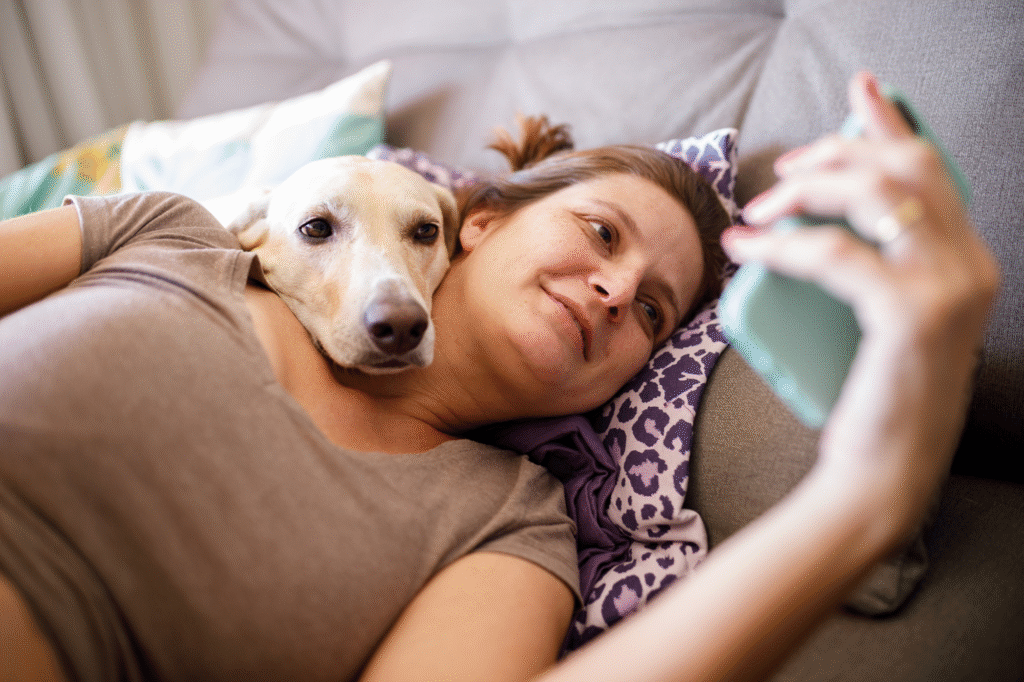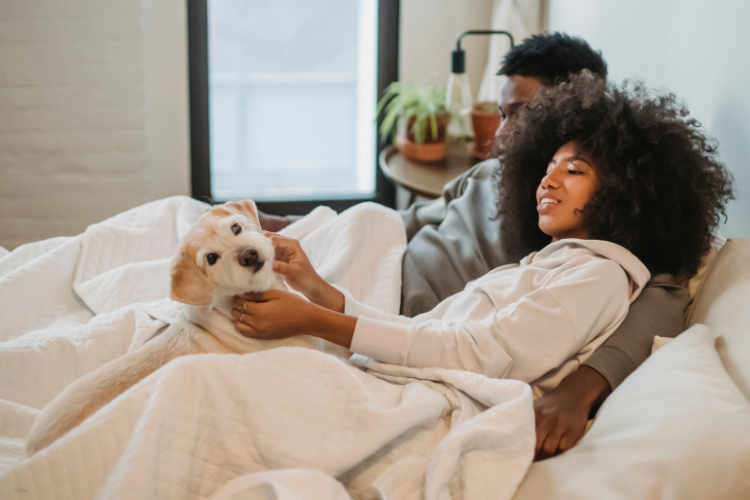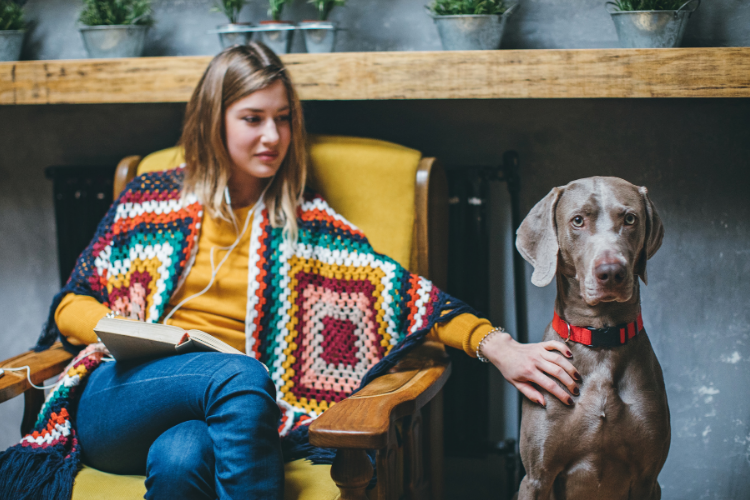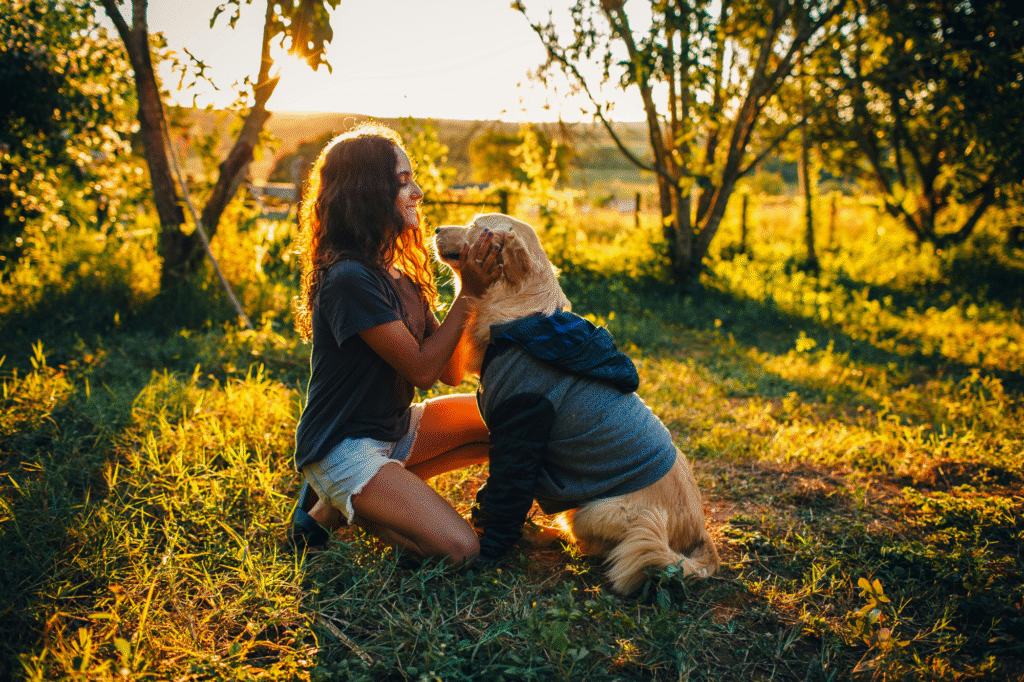Insight into a dog’s persistent trailing behavior.

When your dog follows you from room to room, it can feel cute, comforting, or even a little frustrating when you’re just trying to get something done. But that behavior is more than simple loyalty—it reflects instincts, emotions, and habits shaped by thousands of years of domestic partnership. Understanding what’s behind the motion helps you see your companion in a new light, offering insight into what it might actually mean when they trail you through the house. Here are ten possibilities.
1. Your dog follows you because it sees you as part of its pack.

Dogs were bred to be social and to stick with their group, so when your dog trails you it’s tapping into that instinct. According to PetMD, one of the common reasons dogs follow their humans is rooted in pack instinct and social bonding. By sticking close you’re not bothered by a shadow, you’re part of a team in your dog’s mind and they’re staying close because the pack leader (you) matters.
2. Your dog might be reading your cues to stay close.

When your dog stays near your movements it’s often about synchrony, matching your activity as part of the bond they share, as stated by behavioural research reported by The Kennel Club. They sense your motion, your direction and follow because that proximity feels safe and connected. This isn’t just being clingy, it’s a behaviour deeply embedded in the human-dog relationship.
3. Your dog is seeking reassurance when you’re moving around.

Your movement can signal changes in the environment and dogs pick up on that, turning to you for guidance and comfort. As discovered by studies of human-canine affiliation, dogs show synchronized behaviour with their owners when attached and familiar. They follow you because you’re safe, you’re familiar, and you provide cues for what comes next.
4. Your dog may simply want something that you’re about to provide.

If your dog trails you into the kitchen, the bathroom or the home office chances are they’re anticipating something—food, a walk, play, or attention. That behaviour often grows when they’ve learned that your movement precedes those treats or routines. The next time they trail you, check whether they’re thinking “what’s next?” rather than “just me.”
5. Your dog could be responding to boredom or lack of stimulation.

When there’s not enough happening in a dog’s world, the human becomes the entertainment. Following your movements gives them something to do, somewhere to be, and someone to watch. That “shadowing” might be less about love and more about needing something engaging. Offering enriching toys or independent time can reduce the need to follow every step.
6. Your dog might be guarding you without you realising it.

For some dogs trailing isn’t about mealtime or play—it’s about protection. The dog stays close to monitor your actions and keep the “pack” together. That means your steady presence, movement and activity give them cues that everything’s expected, familiar and contained. When you wander, they follow, making sure none of the usual rhythms shift.
7. Your dog may be checking on your readiness for shared activities.

Dogs pick up on the fact that when you move, something may be about to happen—walk, treat, outing, or play. By trailing you they’re essentially anticipating “are we going now?” Because they’ve set patterns where your movement precedes something they like. Observing who is moving and where becomes part of how they stay connected to your routine.
8. Your dog might be experiencing mild anxiety or uncertainty.

If your companion starts following you more than usual or seems clingier, they may be feeling insecure or unsure. Changes in routine, environment, or health may trigger them to stick closer. In those moments following you doesn’t feel like fun—it feels safe. Being aware of that shift helps you notice when something’s off and your dog is leaning on you for comfort.
9. Your dog simply enjoys your company and wants to be near you.

Sometimes the simplest explanation is still true: your dog likes being with you. The presence of the person they trust and care for is the appealing factor not a specific need. Proximity equals affection. That means your dog’s following is a way of saying “I’d rather be near the person I feel safe with” and not necessarily about demands or discomfort.
10. Your dog is reinforcing patterns that reward being close to you.

Every time you engage when they follow—petting, talking, giving a treat—your dog learns that trailing you brings benefits. Over time this becomes a habit even if the reward isn’t obvious to you. If following you leads to warmth, attention or food then your dog will keep doing it. Recognising that pattern gives you the power to shape when following is good and when it’s fine to give your dog space.
